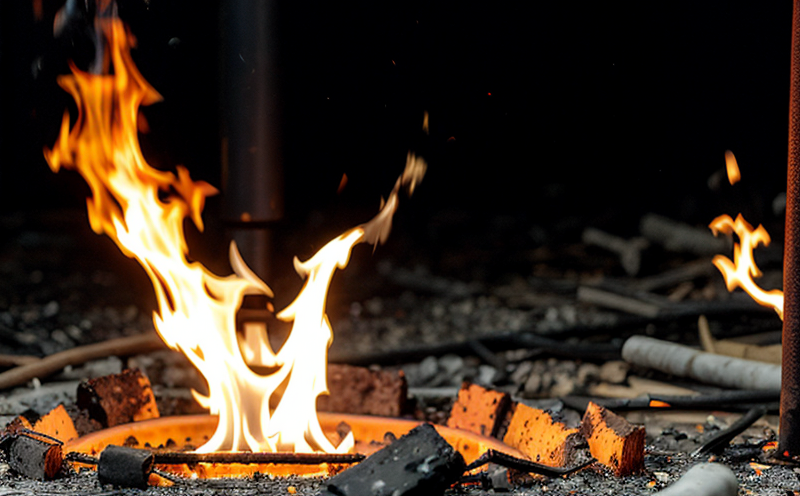In the world of toy manufacturing, ensuring that products are safe and non-flammable is paramount. The real-life candle exposure test simulates a scenario where toys might be placed near open flames—whether this is intentional or accidental. This stringent test is particularly important because young children often play with their toys in environments where there may be candles or other fire sources within reach.
The test involves placing the toy in direct contact with a candle, allowing it to burn for an extended period under controlled conditions. The primary objective is to assess whether any part of the toy could ignite, leading to potential hazards. This testing method closely mirrors real-world scenarios where children might bring their toys into proximity with candles or other open flames.
The process begins by selecting appropriate specimens that represent a typical batch or variant of the product being tested. The specimens are then prepared according to standard protocols, ensuring they accurately reflect the materials and construction used in production.
Once prepared, the specimens are placed directly on top of an actively burning candle for several minutes. The duration is determined by international standards such as ISO 8124, which outline the specific time frames required to simulate realistic exposure scenarios. After the specified period elapses, the test team carefully examines each specimen for signs of damage or ignition.
This testing process not only helps manufacturers identify potential risks early in the product lifecycle but also provides valuable data that can inform design improvements and material selection processes. By adhering strictly to industry best practices, this real-life candle exposure test ensures that toys remain safe even under extreme conditions.
- Environmental Impact: The use of controlled environments minimizes waste generation compared to field testing which might result in accidental damage or destruction.
- Sustainability: Standardized testing reduces the need for multiple prototypes, thereby conserving resources and minimizing environmental impact.
- Economic Benefits: Early detection of flammability issues saves companies significant costs by avoiding recalls and liability lawsuits.
The results of these tests are meticulously documented and reported. Compliance officers can then use this information to make informed decisions about product modifications or additional safety measures. R&D engineers rely on such data to innovate safer materials and designs. Procurement teams benefit from insights into which suppliers provide the safest components, ensuring that all products meet stringent flammability standards.
In summary, the real-life candle exposure test is an essential component of toy manufacturing quality assurance programs. It plays a crucial role in safeguarding children's well-being by preventing accidents caused by potentially flammable toys.
Quality and Reliability Assurance
The implementation of robust quality and reliability assurance processes complements the real-life candle exposure test, ensuring that every aspect of toy production meets international standards. Quality managers play a vital role in overseeing these processes, working closely with compliance officers to ensure all products comply with relevant regulations.
One key aspect is conducting regular audits throughout the supply chain to verify that manufacturers are adhering to established guidelines. This includes checking raw material sources for consistency and quality, as well as monitoring production facilities for adherence to safety protocols.
Reliability assurance focuses on maintaining consistent performance across all products. Engineers involved in R&D continuously refine testing methods based on feedback from real-world applications. This iterative approach ensures that any improvements made are validated through rigorous testing before being incorporated into future designs.
The combination of these measures enhances the overall safety and reliability of toys, providing peace of mind to parents and caregivers who trust manufacturers to deliver safe products. By integrating comprehensive quality assurance practices, companies demonstrate their commitment to protecting children's health and well-being.
International Acceptance and Recognition
The real-life candle exposure test has gained widespread acceptance across various international standards bodies. Compliance with these guidelines ensures that toy manufacturers can meet global market requirements, fostering trust among consumers worldwide.
Among the most prominent organizations recognizing this type of testing are:
- ISO (International Organization for Standardization): ISO 8124 specifically addresses safety aspects related to toys. It includes clauses that mandate flammability tests similar to those conducted during real-life candle exposure.
- ASTM International: ASTM F963 focuses on toy safety and specifies procedures akin to the real-life candle exposure test for evaluating potential hazards associated with flames.
- EN (European Standard): EN 71, a European standard, also emphasizes flammability testing as part of its comprehensive framework covering toy safety.
- IEC: Though primarily focused on electrical and electronic equipment, the IEC often references principles applicable to non-electrical products like toys when discussing material behavior in fire situations.
By adhering to these international standards, manufacturers ensure that their products not only meet local regulations but also comply with broader global expectations. This harmonization of standards facilitates smoother trade between countries and builds confidence among international buyers.
The recognition given by these organizations underscores the importance placed on flammability testing in toy manufacturing. It highlights how critical it is for companies to invest in thorough quality assurance measures, including real-life candle exposure tests, to maintain their reputation and gain market share.





